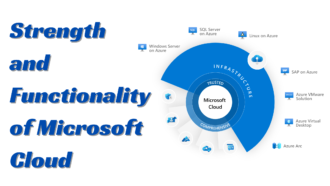Cloud Cost Optimization
It’s important not to confuse cloud cost optimization with cloud cost reduction. Just because you’re allotted a specific budget for your cloud costs doesn’t mean you should try to spend as little as possible. It would help if you focused on getting the most value for your money, similar to how you would approach any other revenue-generating expense, such as advertising. This is where cloud optimization comes in.
TIPS ON HOW TO MAKE THE MOST OF IT:
AUDIT YOUR COSTS
The first step for many companies is to audit their cloud costs – something many haven’t done in a while. Over time, cloud costs can build up without anyone realizing it, and sometimes, those costs aren’t applied to the right places. By auditing your cloud costs, you can determine where you may be overpaying or underpaying and identify areas where you could be doing better.
IDENTIFY INACTIVE OR UNDERUTILIZED RESOURCES
It’s a good idea to periodically identify and remove unused or inactive resources. This way, you can keep your system clean and tidy and avoid having leftover resources taking up space unnecessarily. To do this, set up processes that help you quickly identify and remove these resources. The more rigorous your organization’s operations are, the less likely resources will be left behind.
RIGHT-SIZE RESOURCES
Many cloud solutions are on the market today, each with its right-sizing tools. Right-sizing ensures that instances and systems use the correct resources more efficiently than manual analysis. This can help save on cloud costs in the long run.
CREATE PROCESSES FOR REQUISITIONING AND DECOMMISSIONING
It can be frustrating for organizations when resources go unused or become inactive. Usually, this is because they don’t have suitable systems or processes in place. An excellent way to reduce this is by enforcing stricter controls when resources are requisitioned and ensuring they are correctly decommissioned when they are no longer necessary.
USE VISUAL TOOLS
Data visualizations are a great way to understand a system’s use. Heat maps can help identify potential areas of high activity before they become disruptive. By seeing the system load heading in one direction, you can start to take steps to balance and adjust it before it becomes an issue.
BUILD CROSS-FUNCTIONAL TEAMWORK
It can be challenging to figure out where to spend your money on cloud costs – everyone from administration to developers to users may have their ideas. However, the employees working with the cloud daily are most likely to have a clear picture of where the money needs to be spent. By creating teams that include people from different departments, you can better understand where your money is going and where you could improve.
Should you do it or not?
Cloud infrastructure can help save you money, even if you’re already mindful of your expenses. If you’re not getting everything you want from your cloud, it might be time to focus on cloud cost optimization.


















